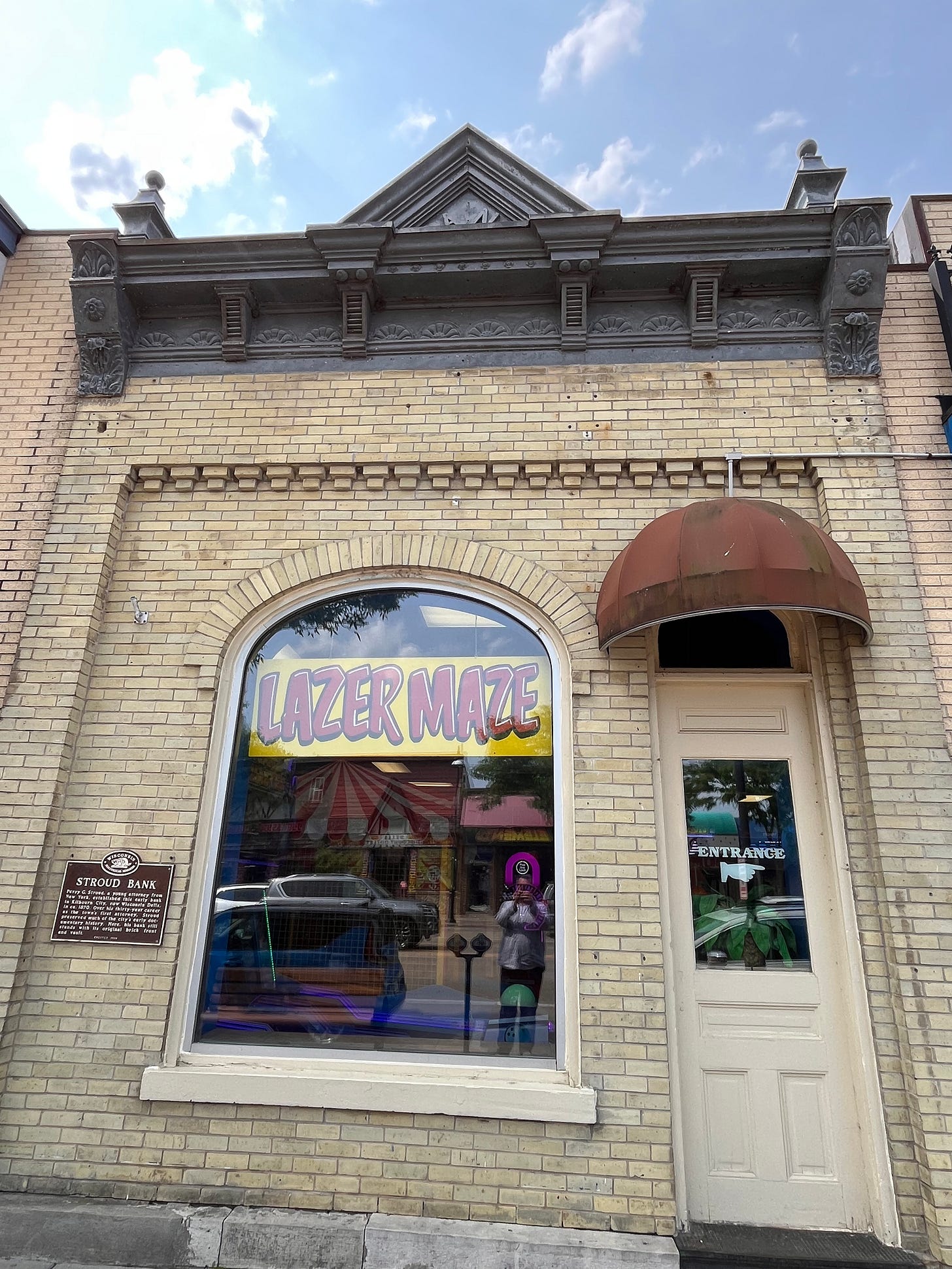On Broadway in Wisconsin Dells, a few blocks from the River, near “America’s oldest photographic studio” (a dubious claim in a town built by illusion), is the Stroud Bank building. The bank was founded a few decades after Robert Allen built the Dell House on land occupied by Ho-Chunk families who had been there for, conservatively, 2 millennia.1
There is a historical marker on the exterior of what once was Stroud Bank. Walking down Broadway toward the River, it is easy to miss it. Harder to miss is the banner in the window advertising the current occupant of the building: “Lazer Maze!”
I wonder what a Lazer Maze is, but I don’t go in because it doesn’t look open. A lot of things don’t look open this late May weekend afternoon in a town literally founded by entertainers. By all accounts, the Dell House—the first building built by a White person on this land that Ho-Chunk stories tell us was carved by an ancient serpent—had entertainment that was less family-friendly than whatever a Lazer Maze is. Or a waterpark.
Chief Yellow Thunder refused to leave this land in the 1830s. US officials removed him and his people multiple times. He and his people returned multiple times. Ultimately, in 1849, he purchased 40 acres of land his ancestors had occupied for longer than the human brain can fully comprehend. He played a game he hadn’t entered. He purchased his ancestral home from people who stole it and thought he was trespassing.
The Dells has needed a bank ever since, I suppose.
It also needs a Lazer Maze because the River is no longer sufficient to bring people to visit. Seems like the maze should be open on this 75-degree, sunny day. I bet I could throw a rock into the River from here.
The Dell House burned to the ground before the 20th century began. Robert Allen died in New Lisbon in the 1880s, a penniless ward of the state.
A century and a half later, I didn’t get to see the Lazer Maze. Just the outside of a bank.
Dells Country Historical Society, Others Before You . . . The History of Wisconsin Dells Country. Dells Country Historical Society and New Past Press, 1995.





